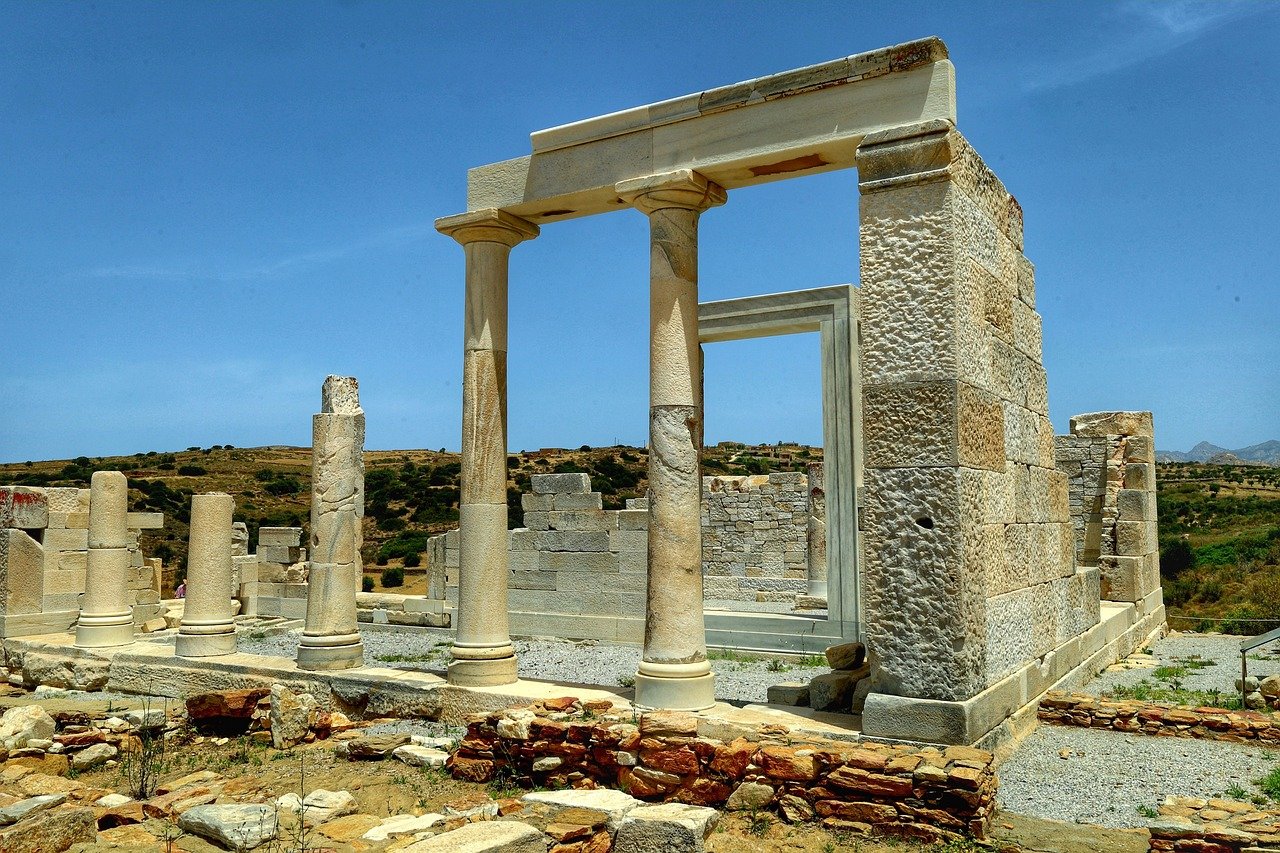The Secrets of Ancient Trade Routes
Ancient trade routes hold within them the secrets of civilizations past, whispering tales of economic prosperity, cultural exchange, and historical significance. These ancient pathways were not merely routes for the transportation of goods but lifelines that connected distant lands, fostering interactions that shaped the world as we know it today.
One of the most renowned trade routes of antiquity is the Silk Road, a network that spanned continents, bridging the East and the West. Along this legendary path, silk, spices, and other precious commodities traversed vast distances, weaving together the fabric of diverse cultures and economies.
Delving deeper into history, we uncover the mysteries of the Incense Route, a historic trade network that carried the fragrant treasures of Southern Arabia to the Mediterranean regions. The aroma of incense wafted through ancient marketplaces, symbolizing not only luxury but also the interconnectedness of civilizations.
Traveling northward, we encounter the Amber Road, a trade route that served as a conduit for the exchange of amber and other goods between the Baltic and Mediterranean regions. Like a golden thread weaving through the tapestry of trade, amber influenced both commerce and culture along its path.
Across vast deserts and shifting sands, the Trans-Saharan Trade Route emerged as a vital link between North Africa and Sub-Saharan regions. Here, the glitter of gold mingled with the taste of salt, as caravans traversed the sands of time, carrying with them the wealth of nations.
Turning our gaze towards the sea, we set sail on the Spice Route, a maritime network that connected continents through the trade of exotic spices. Pepper, cinnamon, and cloves became treasures of the sea, enriching palates and fostering a global exchange of flavors.
Venturing further across oceans, we unravel the mysteries of the Maritime Silk Road, a sea route that linked China to Southeast Asia and beyond. Like a seafaring tapestry, this route carried silk, ceramics, and other goods, stitching together distant lands through maritime commerce.
Back on land, we journey along the Royal Road, an ancient highway that connected the heart of the Persian Empire to its far-flung provinces. This artery of communication facilitated trade, cultural exchange, and the flow of ideas, contributing to the empire's prosperity and unity.
As we transition to the medieval era, the Hanseatic League emerges as a powerful trading alliance that dominated commerce in Northern Europe. Cities and regions became nodes of trade, interconnected by a web of economic policies and cultural interactions that shaped the course of history.

The Silk Road
Exploring the historical significance and economic impact of ancient trade routes that connected civilizations, facilitating the exchange of goods, ideas, and cultures across vast distances and diverse landscapes.
The Silk Road, a legendary network of trade routes that spanned over 6,000 kilometers, played a pivotal role in connecting the East and West during ancient times. This intricate web of pathways enabled the exchange of silk, spices, precious metals, and other valuable commodities between diverse civilizations. Imagine caravans of camels laden with goods traversing deserts, mountains, and bustling marketplaces, creating a vibrant tapestry of trade and cultural exchange.
The Silk Road wasn't just a physical route; it was a bridge that linked the rich cultures of China, India, Persia, and Rome, fostering intellectual, religious, and artistic interactions. Along this historic trade route, ideas, technologies, and innovations were shared, shaping the development of societies and influencing the course of history.
One of the most fascinating aspects of the Silk Road was its ability to spark curiosity and ignite a sense of wonder among travelers and merchants. The allure of exotic goods, the thrill of embarking on a perilous journey, and the promise of lucrative trade deals created an atmosphere of excitement and adventure along the route.
As caravans braved harsh terrains and encountered diverse cultures, the Silk Road became more than just a trade route—it became a symbol of resilience, cooperation, and human ingenuity. The legacy of the Silk Road continues to inspire modern-day explorers, historians, and entrepreneurs, reminding us of the transformative power of cross-cultural exchange and commerce.

The Incense Route
Exploring the historical significance and economic impact of ancient trade routes that connected civilizations, facilitating the exchange of goods, ideas, and cultures across vast distances and diverse landscapes.
The Incense Route, a historic trade network, played a crucial role in transporting precious incense and luxury goods from Southern Arabia to the Mediterranean regions. This ancient route not only facilitated trade but also shaped cultural interactions and economic development between the two distant regions.

The Amber Road
Exploring the historical significance and economic impact of ancient trade routes that connected civilizations, facilitating the exchange of goods, ideas, and cultures across vast distances and diverse landscapes.
The Amber Road was a crucial trade route that played a significant role in facilitating the exchange of amber, a precious gemstone, and various other goods between the Baltic and Mediterranean regions. This ancient route not only influenced trade patterns but also contributed to cultural diffusion, shaping the interactions between different civilizations.
The origins of the Amber Road can be traced back to the prehistoric times when amber was highly valued for its beauty and believed mystical properties. The route gained prominence during the Roman Empire's reign, as amber became a symbol of luxury and status, driving trade along the road to flourish.
Stretching over vast distances, the Amber Road connected the rich amber deposits in the Baltic region to the affluent markets in the Mediterranean, creating a network of trade that transcended borders and cultures. Merchants, travelers, and caravans traversed through diverse landscapes, facing various challenges and adventures along the way.
One of the fascinating aspects of the Amber Road was its ability to not only transport goods but also ideas and innovations. The exchange of goods along the route led to the sharing of knowledge, technologies, and cultural practices, enriching the societies that were part of this ancient trading network.
The Amber Road's legacy continues to resonate in modern times, symbolizing the interconnectedness of civilizations and the enduring impact of trade on shaping human history. The route's historical significance serves as a reminder of the power of commerce in fostering relationships and driving progress across regions and continents.

The Trans-Saharan Trade Route
Exploring the historical significance and economic impact of ancient trade routes that connected civilizations, facilitating the exchange of goods, ideas, and cultures across vast distances and diverse landscapes.
The Trans-Saharan Trade Route was a crucial pathway that spanned the vast desert landscapes, connecting North Africa to Sub-Saharan regions. This historic trade route played a pivotal role in enabling the exchange of commodities such as gold, salt, ivory, and slaves between the regions, shaping economic development and cultural interactions along the way.
Caravans of camels laden with goods traversed the challenging terrain, enduring harsh desert conditions and unpredictable weather. The route not only facilitated trade but also served as a conduit for the exchange of knowledge, ideas, and beliefs among the diverse societies that thrived along its path.
One of the most sought-after commodities traded along the Trans-Saharan Trade Route was gold from the rich mines of West Africa. This precious metal was highly valued in the Mediterranean regions and beyond, fueling economic prosperity and power dynamics among ancient civilizations.
The trade route also facilitated the exchange of salt, a precious commodity essential for preserving food and sustaining life in the arid desert regions. The salt mines in the Sahara were a vital source of this commodity, which was in high demand across various regions along the route.
Cultural exchanges along the Trans-Saharan Trade Route were diverse and multifaceted, with merchants, traders, and travelers from different backgrounds coming together to engage in commerce and share their customs, languages, and traditions. This cultural interchange enriched the societies along the route and contributed to the development of unique cultural identities.
The Trans-Saharan Trade Route not only shaped the economic landscape of the regions it connected but also fostered diplomatic relations and alliances among distant kingdoms and empires. The flow of goods and resources along the route influenced political dynamics and power structures, leading to the rise and fall of civilizations throughout history.
Despite the challenges and risks involved in traversing the vast desert expanse, the Trans-Saharan Trade Route endured for centuries, leaving a lasting legacy of trade, cultural exchange, and interconnectedness between North Africa and Sub-Saharan regions.

The Spice Route
Exploring the historical significance and economic impact of ancient trade routes that connected civilizations, facilitating the exchange of goods, ideas, and cultures across vast distances and diverse landscapes.
The Spice Route, a historic trade network that linked Asia, Africa, and Europe through the exchange of valuable spices such as pepper, cinnamon, and cloves, played a transformative role in global trade and cultural interactions. This ancient route not only facilitated the movement of goods but also served as a bridge connecting different regions and fostering cross-cultural exchanges.

The Maritime Silk Road
Exploring the historical significance and economic impact of ancient trade routes that connected civilizations, facilitating the exchange of goods, ideas, and cultures across vast distances and diverse landscapes.
The Maritime Silk Road was a crucial sea route that connected China to Southeast Asia, the Indian Ocean, and beyond. This maritime network played a pivotal role in facilitating the trade of silk, ceramics, and other valuable goods between different regions, promoting maritime commerce and cultural exchange.
The Maritime Silk Road was not just a pathway for the exchange of goods but also a bridge for the transmission of ideas, technologies, and cultural practices. It fostered connections between distant civilizations and contributed to the development of global trade networks.
Imagine vast fleets of ships laden with silk, spices, and precious commodities navigating the seas, braving unknown waters and encountering diverse cultures along the way. The Maritime Silk Road was a bustling highway of maritime activity, bustling with merchants, sailors, and explorers seeking new opportunities and adventures.
One of the most significant aspects of the Maritime Silk Road was its role in promoting cultural exchanges between different regions. Through the trade of goods and the interaction of people from diverse backgrounds, the Maritime Silk Road served as a melting pot of ideas, beliefs, and traditions, enriching the cultural tapestry of the civilizations it connected.
Travelling along the Maritime Silk Road was not just a journey of commerce but also a voyage of discovery and exploration. It opened up new horizons, sparked innovations in navigation and shipbuilding, and paved the way for future maritime endeavors that would shape the course of history.
The legacy of the Maritime Silk Road continues to resonate in the modern world, reminding us of the enduring impact of ancient trade routes on shaping global economies, fostering cultural exchanges, and connecting distant lands across the vast expanse of the seas.
1. What were the main goods traded along the Maritime Silk Road?
2. How did the Maritime Silk Road contribute to cultural exchanges?
3. What role did maritime technology play in the success of the Maritime Silk Road?

The Royal Road
Exploring the historical significance and economic impact of ancient trade routes that connected civilizations, facilitating the exchange of goods, ideas, and cultures across vast distances and diverse landscapes.
The Royal Road, an ancient highway that connected the Persian Empire's capital to its distant provinces, was a marvel of engineering and a cornerstone of communication and trade. Stretching over 1,600 miles from Susa to Sardis, this road enabled swift passage of royal decrees, messengers, and traders, contributing significantly to the empire's prosperity and stability.
Imagine a bustling thoroughfare, where caravans laden with goods from all corners of the empire traversed the rugged terrain, connecting bustling cities and remote outposts. The Royal Road was not merely a physical pathway but a lifeline that bound the vast empire together, fostering cultural exchange, economic growth, and political cohesion.
Along the Royal Road, travelers encountered a vibrant tapestry of languages, customs, and traditions, creating a melting pot of diversity that enriched the fabric of the Persian Empire. From the opulent palaces of Persepolis to the bustling marketplaces of Babylon, the road bore witness to the ebb and flow of commerce, ideas, and people.
At strategic intervals, way stations provided weary travelers respite, offering food, shelter, and fresh horses for the arduous journey ahead. These oases of civilization dotted the landscape, serving as hubs of activity where merchants haggled, scholars debated, and diplomats negotiated, shaping the course of history along the Royal Road.
The Royal Road's legacy transcends mere bricks and mortar, symbolizing the enduring power of connectivity and communication in shaping the destiny of nations. As the arteries of the empire, it pulsated with the lifeblood of trade, diplomacy, and cultural exchange, laying the foundation for a golden age of prosperity and innovation.
- What were the main goods traded along the Royal Road?
- How did the Royal Road impact the economy of the Persian Empire?
- What role did the Royal Road play in fostering cultural exchange?
- Were there any notable historical events that took place along the Royal Road?

The Hanseatic League
The Hanseatic League was a formidable medieval trading alliance that wielded immense influence over commerce in Northern Europe during the Middle Ages. Originating in the 13th century, this league of merchant guilds and market towns played a pivotal role in shaping economic policies and cultural interactions across the region. The league's primary objective was to promote and protect trade interests, facilitating the exchange of goods and fostering economic growth.
One of the key strengths of the Hanseatic League lay in its ability to establish trade routes and networks that connected various cities and regions, enabling efficient transportation of goods and commodities. This interconnected web of trade allowed member cities to leverage their collective power, negotiate favorable trade agreements, and maintain a competitive edge in the bustling medieval marketplace.
Moreover, the Hanseatic League played a crucial role in standardizing trade practices and regulations, ensuring fair and transparent transactions among its members. By establishing common commercial laws and resolving disputes through arbitration, the league promoted trust and stability in trade relations, laying the foundation for long-term economic prosperity.
Furthermore, the Hanseatic League's influence extended beyond economic realms, as it also facilitated cultural exchanges and diplomatic relations among member cities and foreign powers. Through the mutual exchange of ideas, technologies, and customs, the league contributed to the diffusion of knowledge and the enrichment of cultural diversity in Northern Europe.
Overall, the Hanseatic League's legacy as a powerful trading alliance endures as a testament to the transformative impact of collaborative commerce and strategic partnerships in shaping the economic and cultural landscape of medieval Europe.
Frequently Asked Questions
- What were the main goods traded along the Silk Road?
The Silk Road facilitated the exchange of silk, spices, precious metals, gems, and other luxury goods between the East and West.
- How did the Incense Route contribute to cultural interactions?
The Incense Route played a significant role in shaping cultural interactions by transporting precious incense and luxury goods from Southern Arabia to the Mediterranean regions.
- Why was the Amber Road important in ancient trade?
The Amber Road was crucial for the exchange of amber, a valuable gemstone, and other goods between the Baltic and Mediterranean regions, influencing trade patterns and cultural diffusion.
- What commodities were traded along the Trans-Saharan Trade Route?
The Trans-Saharan Trade Route facilitated the trade of gold, salt, ivory, and other commodities between North Africa and Sub-Saharan regions.
- How did the Spice Route impact global trade?
The Spice Route transformed global trade by connecting Asia, Africa, and Europe through the exchange of valuable spices like pepper, cinnamon, and cloves.
- What goods were exchanged along the Maritime Silk Road?
The Maritime Silk Road enabled the trade of silk, ceramics, spices, and other goods between China, Southeast Asia, and the Indian Ocean, promoting maritime commerce and cultural exchange.
- What was the significance of the Royal Road in the Persian Empire?
The Royal Road connected the Persian Empire's capital to its provinces, facilitating efficient communication, trade, and cultural exchange, contributing to the empire's prosperity and stability.
- How did the Hanseatic League influence trade during the Middle Ages?
The Hanseatic League dominated commerce in Northern Europe, facilitating trade between cities and regions, shaping economic policies and cultural interactions in medieval times.



















